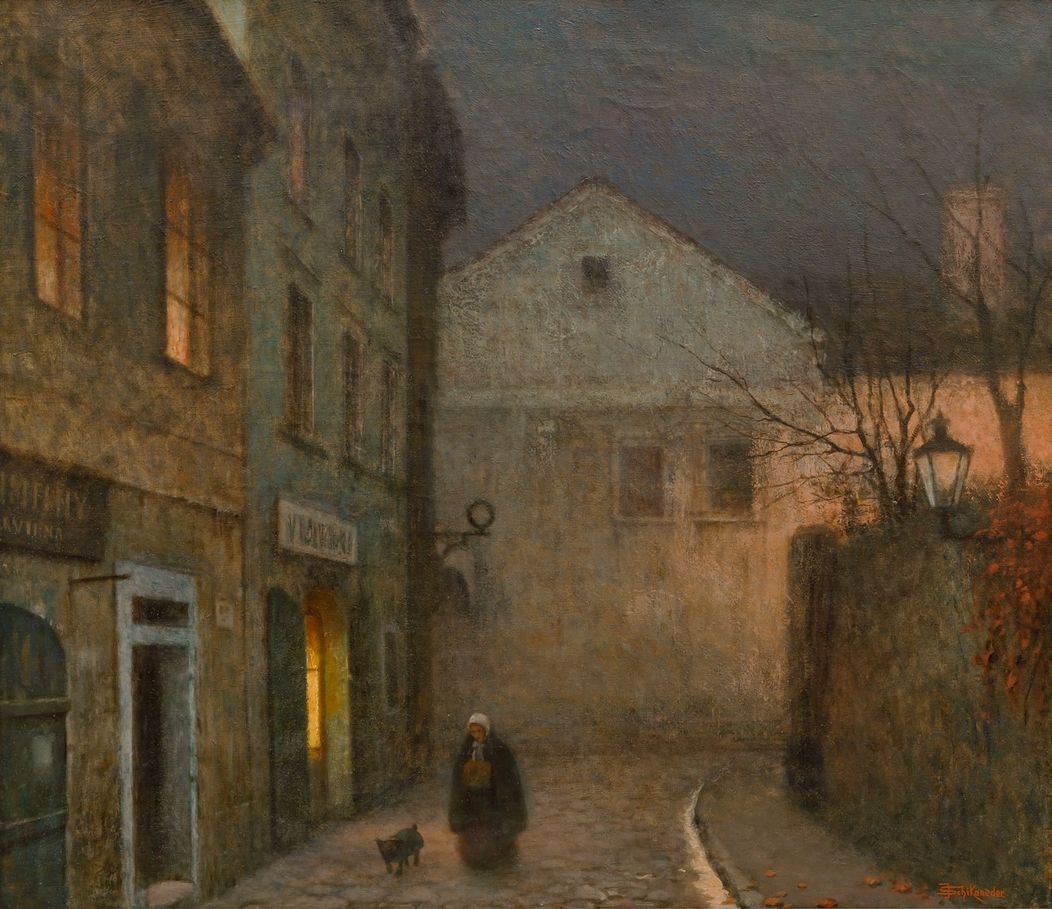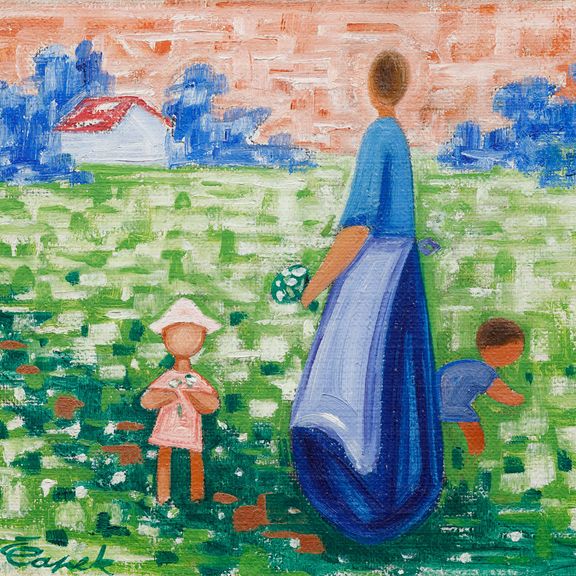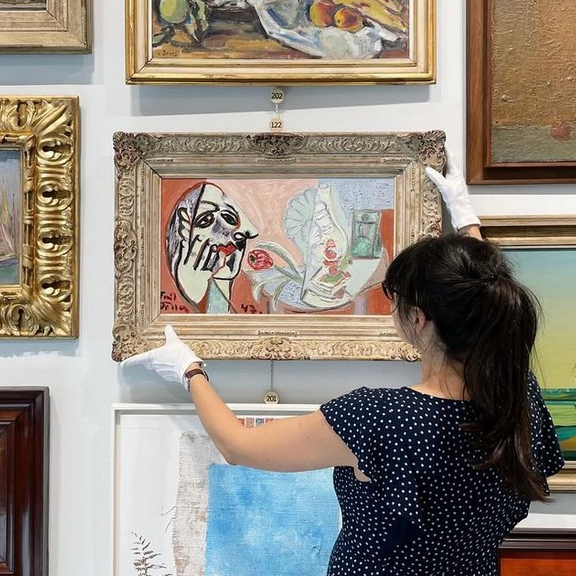
oil on canvas
1900–1910
lower right
90 × 101 cm
framed
The work of Jakub Schikaneder, a unique artist who worked almost equally in the 19th and 20th centuries, gradually crystallised from the beginning, finding new stimuli and constantly developing up until the author’s death, out of the ordinary with no late work stagnation period. Well educated in techniques during his studies at the Prague Academy and in Munich, he initially showed his strong commitment to socially critical scenes. Subsequently, he became inspired by lonely women in the landscape, quiet evening interiors, images of abandoned landscapes, and, in the end, wistful town house interiors influenced by his personal relationship with Prague and its vanishing beauties. The integrating element of all these phases was not only a romantic capture and projection of current moods, but rather a deep introspection into the feelings and pain of a person and the communicativeness of a particular place. The presented painting from the artist’s mature period bears the most characteristic features of his work – a romantic view of reality, contemplation, the mood of pedestrians overflowing with their own emotions, memories, dreams, or anxiety. Schikaneder, with his artistic expression, contributed to the overall intellectual atmosphere of the Prague cultural environment, which was shaped at the turn of the era by the ideas of Karel Hlaváček, Jiří Karásek ze Lvovic, and Rainer Maria Rilke. The Podskalí quarter, which probably no longer existed in this form at the time this painting was executed, is characteristically lit by several independent softly blurred indirect sources of artificial light coming from a ground floor shop, a first floor flat, and a street lamp around the corner. The streetlights on the street where the woman passes are out, as is typical. The woman, accompanied by a faithful dog, is the only character here, and this fact again recalled the growing interest in the position of women in a predominantly masculine society at that time. In addition, the perfect and completely unmistakable rendering enhances the beholder’s extraordinary experience. The painting is presented in an elegant period frame. It is included and reproduced in the artist’s latest monograph, published on the occasion of his comprehensive exhibition in the National Gallery in Prague, as well as in earlier literature (T. Vlček: Jakub Schikaneder, 1855–1924, Prague painter of the turn of the century, Prague 1998, cat. No. 45; V. Hulíková, ed.: Jakub Schikaneder, 1855–1924, National Gallery, Prague 2012, repro. cat. No. 97). The presented artwork has indisputable qualities and thus will be an adornment of every prestigious collection. Assessed during consultations by prof. R. Prahl, CSc., and PhDr. Š. Leubnerová.







